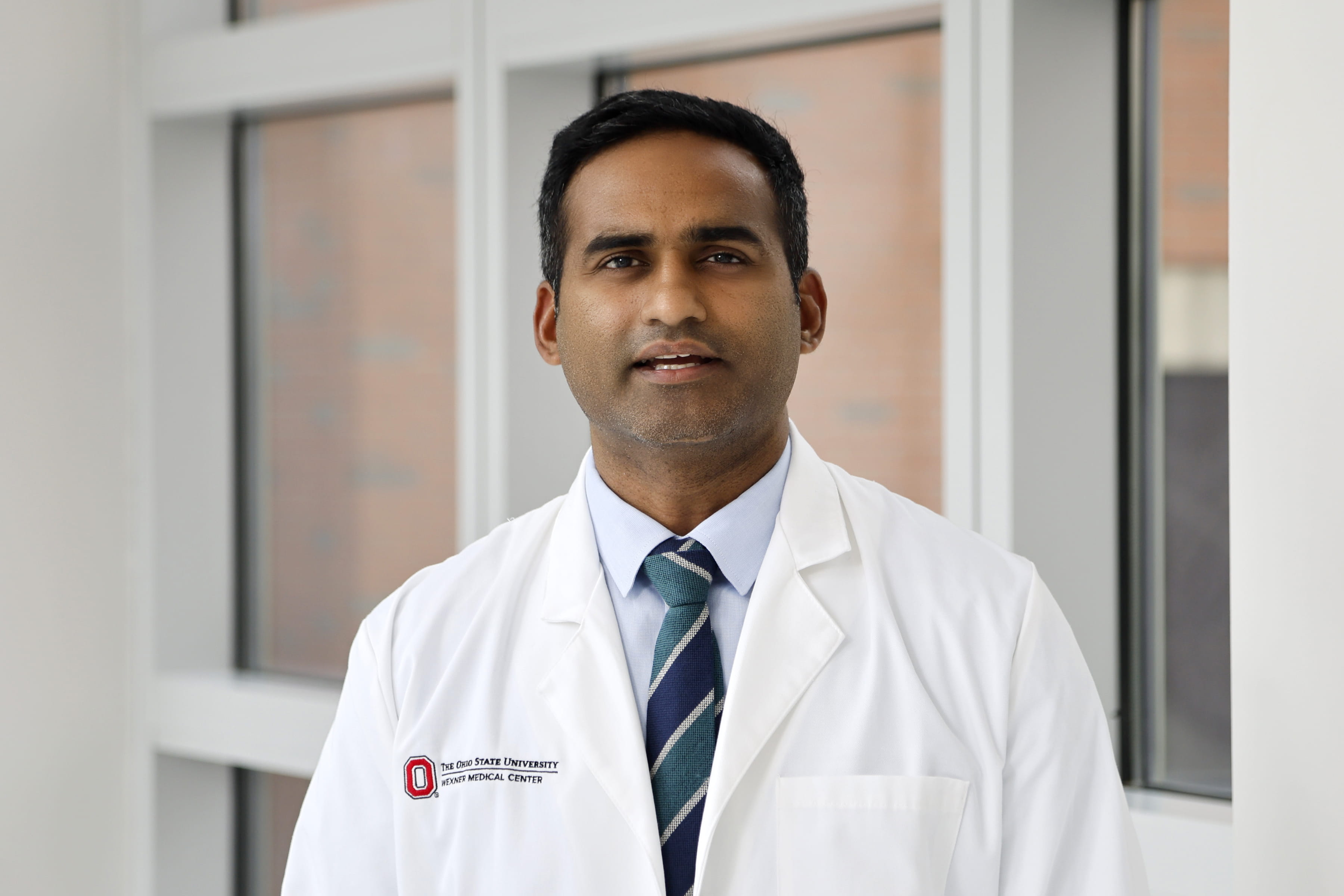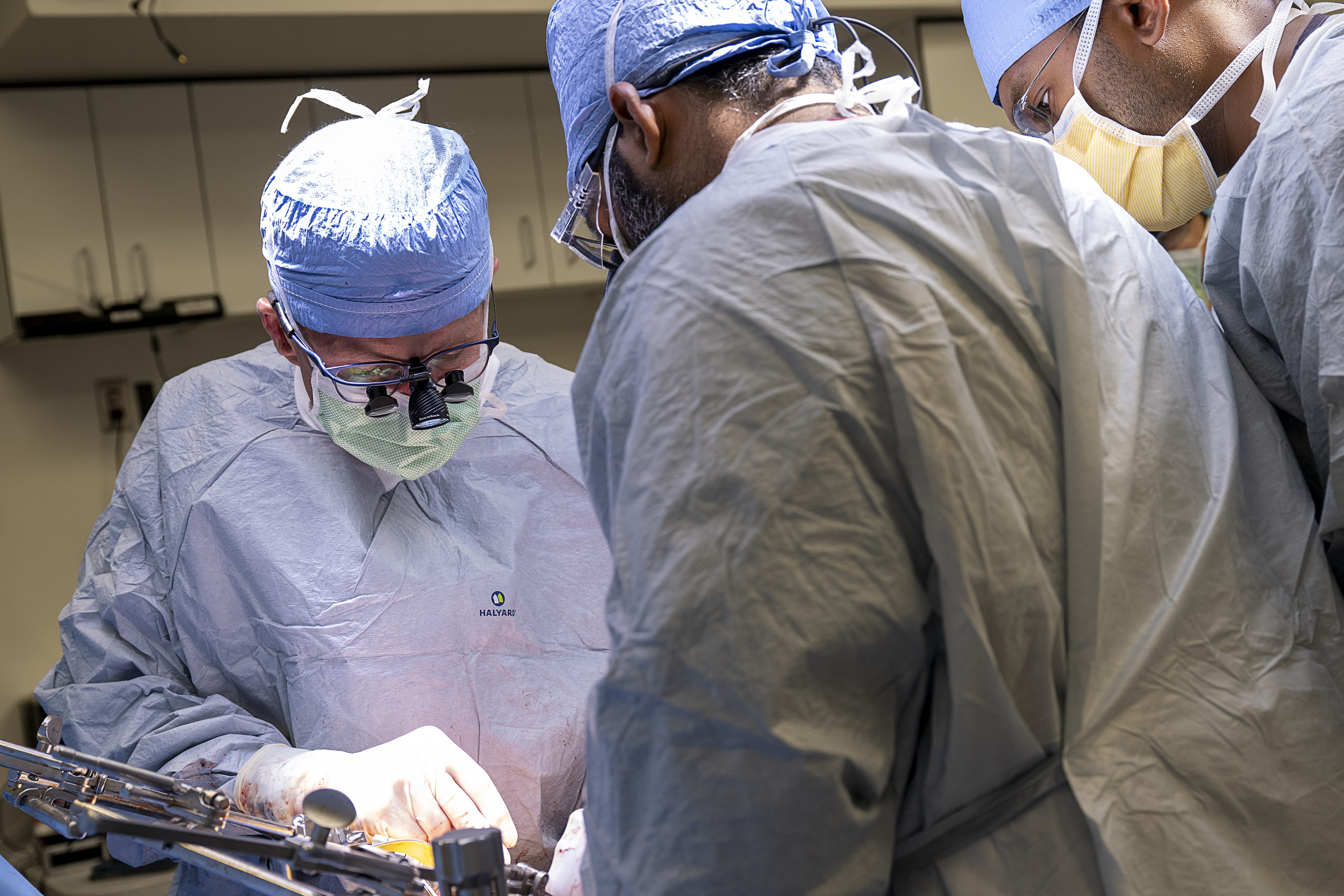August 26, 2024
COLUMBUS, Ohio – New research from The Ohio State University Wexner Medical Center Comprehensive Transplant Center finds transplant centers can safely raise the number of liver transplants by increasing the use of livers from hepatitis C positive donors or from donation after circulatory death.
 The study, published in the journal Transplantation, found short-term patient outcomes aren’t compromised by using livers from these donor groups.
The study, published in the journal Transplantation, found short-term patient outcomes aren’t compromised by using livers from these donor groups.
“The number of liver transplant surgeries in the United States has increased over the past few years but people continue to die while waiting for a transplant or get taken off the waiting list when they get too sick to undergo a liver transplant,” said Sai Rithin Punjala, MBBS, clinical assistant professor of surgery and corresponding author. “Our research shows transplant centers can safely expand the donor pool by using livers from a greater variety of donors.”
The research team analyzed data from a national registry maintained by United Network for Organ Sharing. They looked at all deceased donor liver transplants performed between November 2016 and December 2021, with follow-up data through September 2022. They also conducted an analysis of all deceased donor liver transplants performed at Ohio State Wexner Medical Center during the same time period, with follow-up data through December 2022.
The transplants were divided into four groups – hepatitis C negative donation after circulatory death, hepatitis C negative donation after brain death, hepatitis C positive donation after circulatory death, and hepatitis C positive donation after brain death. Researchers looked at the health of the transplant recipient and the transplanted organ one year after surgery. Recipients of hepatitis C positive livers are treated with an antiviral therapy to clear the virus from the body.
“Our analysis of national data found liver transplants using donated livers from people with hepatitis C or after circulatory death are underutilized in the United States,” Punjala said.
 Out of the 146 transplant centers in the United States that performed liver transplants during the five-year study period, every center performed donation after brain death liver transplantation. Nearly 30% of centers did not perform liver transplants from donors who were hepatitis C positive or died when their hearts stopped beating. Approximately 70% of centers did not perform transplants from a combination of donation after circulatory death and hepatitis C positive donors.
Out of the 146 transplant centers in the United States that performed liver transplants during the five-year study period, every center performed donation after brain death liver transplantation. Nearly 30% of centers did not perform liver transplants from donors who were hepatitis C positive or died when their hearts stopped beating. Approximately 70% of centers did not perform transplants from a combination of donation after circulatory death and hepatitis C positive donors.
Liver transplants from hepatitis C positive donation after circulatory death donors had 1-year patient survival and 1-year graft survival comparable to donation after brain death livers from donors with or without hepatitis C infection. Nationally the 1-year graft survival of hepatitis C negative donation after circulatory death livers was slightly lower – 89% versus 92% – than the other groups.
During the study period, Ohio State Wexner Medical Center performed nearly 570 liver transplant surgeries from donors in all four categories. There was no difference in the length of time patients spent in the hospital after surgery, readmission within one year, one year patient survival and one year organ survival.
“Ohio State performs the most liver transplants from hepatitis C positive and donation after circulatory death donors in the country,” said Navdeep Singh, MBBS, clinical assistant professor of surgery and study co-author. “We follow rigorous guidelines to ensure favorable outcomes for patients on our waitlist.”
Future transplant research will focus on the use of normothermic perfusion to evaluate liver grafts from donation after circulatory death donors prior to implantation.
Study co-authors are April Logan, Jayanthan Subramanian, Lauren Von Stein, Ashley Limkemann, MD, Musab Alebrahim, MD, Sylvester Black, MD, PhD, Austin Schenk, MD, PhD, and W. Kenneth Washburn, MD.
###
Media Contact: Serena Smith, Wexner Medical Center Media Relations, serena.smith@osumc.edu
